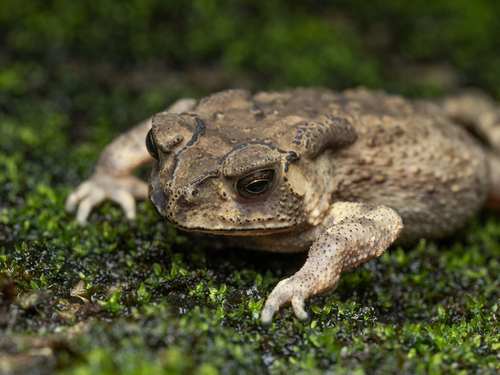
Asian Common Toad
The Asian common toad (Duttaphrynus melanostictus) is an adaptable nocturnal amphibian, renowned for its warty skin and distinct V-marked head. Thriving across diverse Asian habitats, it plays a pivotal role in pest control, underlining its ecological significance.
10 years
Lifespan
Least Concern
Conservation Status
Increasing
Population Trend
Distribution Range of the Asian Common Toad
Duttaphrynus melanostictus, commonly known as the Asian common toad or black-spined toad, is native to South and Southeast Asia. Its geographical distribution includes countries such as India, Nepal, Bangladesh, Bhutan, Sri Lanka, Myanmar, Thailand, Laos, Vietnam, Cambodia, Malaysia, and parts of southern China. It has also been introduced to other regions like Indonesia and Madagascar.
Asian Common Toad's Habitat
Environmental Conditions
This species typically inhabits a range of environments including tropical and subtropical regions. It is found in both lowland and upland areas, often in gardens, agricultural lands, urban areas, forests, and grasslands. The Asian common toad is highly adaptable to different environmental conditions, often thriving in disturbed habitats.
Ecological Niche
Duttaphrynus melanostictus occupies a generalist ecological niche, feeding on a variety of invertebrates, including insects. It is active during the night (nocturnal) and can often be found near human settlements due to its tolerance of environmental modifications. Its adaptability to a wide range of habitats contributes to its widespread presence across its native range.
Copyright @ Nature Style Limited. All Rights Reserved.
 English
English